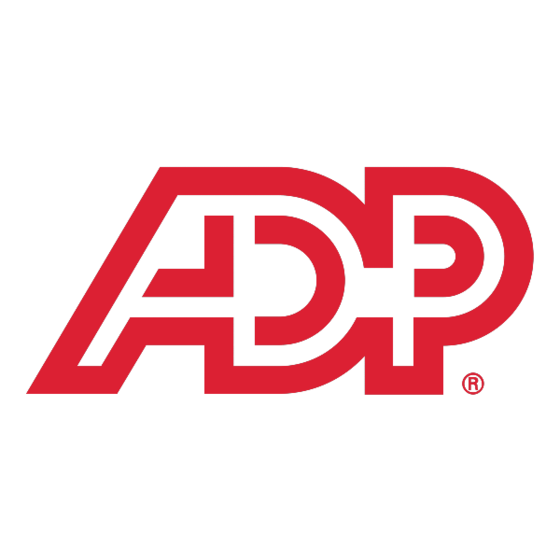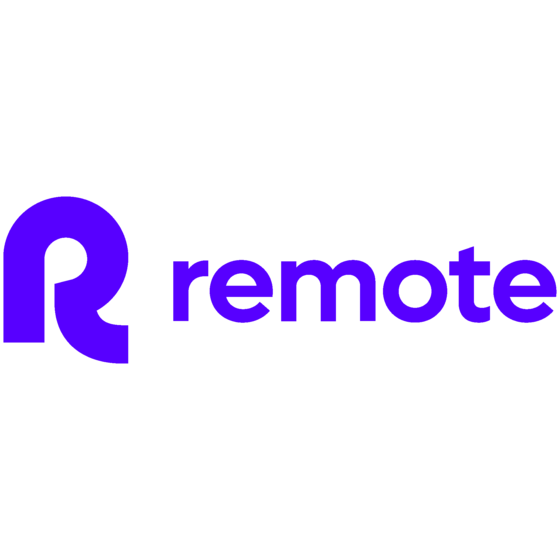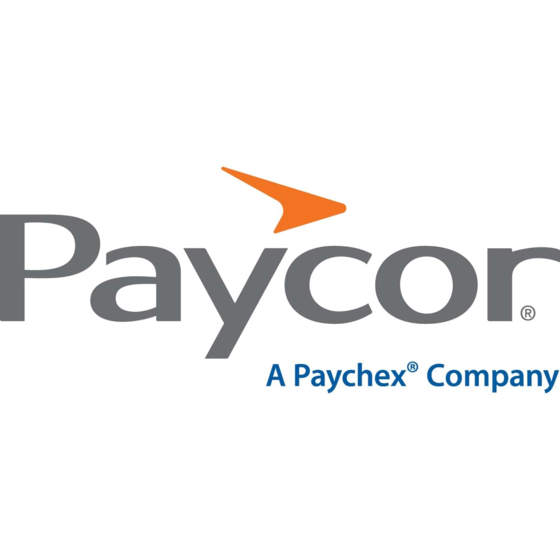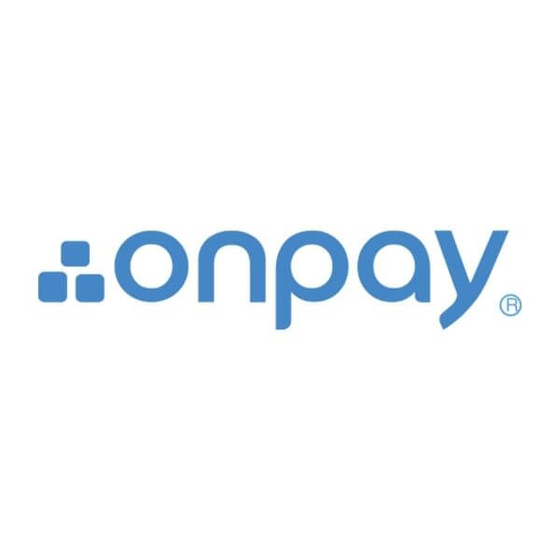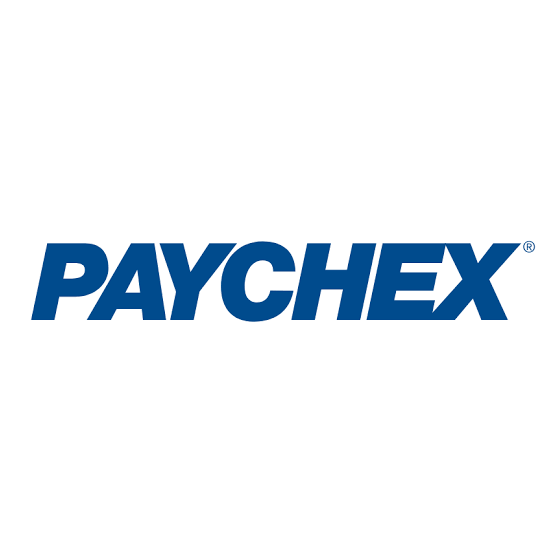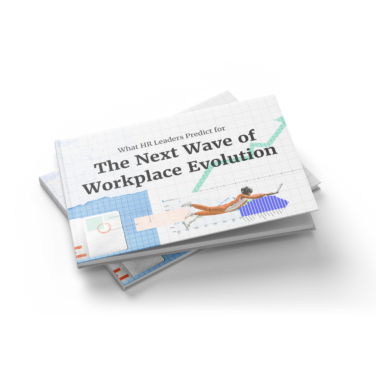Implementing the right payroll system for your business will help save time and increase accuracy by automating payroll and tax calculations and ensuring adherence to payroll taxes and regulations.
But how do you choose the most cost-effective solution for your needs? What are the different kinds of costs involved?
Most of the vendors out there don’t make their exact pricing readily available so, to make your search easier, here I’ll walk you through the typical payroll software costs and other critical factors for you to make an informed decision.
How Much Does Payroll Software Cost?
Let’s get into it. First off, there are several factors to be aware of that contribute to the overall cost of payroll software:
- Pricing varies based on the size of your company (number of users)
- Specific features e.g. tax filing and on-demand pay can come at an extra cost
- Multi-state or international payroll will increase costs
- The level of training and support you want.
Base plans for payroll software can start as low as $17 per month (Patriot Software), while more established payroll service providers like Intuit Quickbooks provide enterprise plans starting at $140 per month, so it’s quite a broad range.
Here’s an overview of the typical payroll software costs for small, medium, and larger organizations.
1. Small businesses (1-100 employees)
Small businesses often need less functionality and levels of support from their payroll software, which is reflected in the price.
There are even some free options out there for organizations on a really tight budget (Payroll4free, HR.my, ExcelPayroll) and don’t mind conducting more manual processes.
Features generally include basic payroll processing, tax calculations, direct deposits, and employee self-service portals.
Typical Cost: $20-50 per month and/or $2–$25 per employee per month
Example: Onpay is a good payroll software for small businesses with a mercifully easy pricing structure. They charge a fixed cost of $40 + $6 per employee, which is about the going rate.
Their package includes unlimited payroll runs, automated tax filings, and support for both W-2 employees and 1099 contractors. You can easily scale up by adding more employees as needed.
If that doesn't fit your needs, there are numerous other standalone payroll platforms that simplify payment processes without overcomplicating it.
2. Medium businesses (100-500 employees)
As companies grow beyond 100 employees, payroll becomes more complex due to compliance, automation needs, and potentially multi-location management.
Medium businesses often require auto payroll syncing, multi-state payroll processing, and more advanced security features like role-based access and payroll fraud detection are also crucial as payroll complexity grows.
Typical Cost: $60–$100 per month and/or $5–$20 per employee per month
Example: Gusto Plus is $60 per month + $9 per employee. For this you get multi-state payroll, next-day direct deposit, and expense and reimbursements.
3. Enterprise businesses (500+ employees)
Enterprise organizations (500+ employees) require highly scalable and automated payroll systems to manage multiple types of workers as well as complex multi-state and global compliance.
AI-driven payroll analytics, workforce forecasting, and real-time financial reporting help optimize costs and compliance.
Enhanced security measures, such as multi-factor authentication, role-based access, and fraud detection protect against payroll risks.
Additionally, enterprises often require custom payroll solutions such as flexible pay and dedicated account managers for ongoing support.
Many organizations will be straying into employer of record territory as well.
Typical Cost: $100–$1,000+ and/or $30-$250 per employee (really depends on needs).
Example: Pricing is usually highly customized at this level, but one example is Papaya Global's enterprise global package that starts at $15 per employee per month, so a minimum of $15,000 per month. Features include support for 160+ countries and automated payments in local currencies.
Payroll Software Price Comparison
This comparison chart summarizes pricing, trial, and demo details for top payroll software vendors
| Tool | Best For | Trial Info | Price | ||
|---|---|---|---|---|---|
| 1 | Best for compliant payroll in 150+ countries | Free demo available | Pricing upon request | Website | |
| 2 | Best for global payroll with tons of integrations | Free demo available | From $8/user/month (billed annually) | Website | |
| 3 | Best for HR, payroll, and integrations in one | Free demo available | Pricing upon request | Website | |
| 4 | Best end-to-end workforce management | Free demo available | From $15/employee/month | Website | |
| 5 | Best for small businesses | 90-day free trial | Pricing upon request | Website | |
| 6 | Best international and local payroll consolidation | Free trial available | From $29/user/month | Website | |
| 7 | Best for automating payroll tasks | 30-day free trial | Pricing upon request | Website | |
| 8 | Best for global teams in 170+ countries | Free demo available | From $25 - $199/user/month | Website | |
| 9 | Best for niche industries | 30-day free trial | From $40/month + $6/user/month | Website | |
| 10 | Best for accurate payroll processing | Free demo available | Pricing upon request | Website |
Payroll Pricing Models
As you might have noticed from the above, payroll software typically follows these three main types of pricing models: the monthly SaaS model, a fixed-pricing model, or a free/freemium plan.
Add-ons such as tax filing, direct deposits, and HR services may increase costs.
Software-as-a-Service model
Businesses subscribed to the software-as-a-service (SaaS) pricing model pay a monthly charge to access cloud-based payroll applications.
The subscription plans for such payroll software include charging a monthly fee per employee in addition to the base fee.
One good example of a payroll software provider following this model is Gusto, which charges businesses a base fee of $40 per month plus $6 for every employee. Thus, a company with 100 employees would pay $640 per month.
Many monthly subscription plans include multiple tiers, each offering different payroll features and services. The expensive plans might include extra technical help, extra HR support, and a personal accountant to prepare and submit taxes.
This model is best-liked by businesses, irrespective of their sizes, because of the cheap monthly charge and scalability options.
Fixed pricing model
Some payroll software charges a fixed monthly fee, irrespective of your number of employees.
The fee generally depends on predetermined variables like the features provided and the number of employees it can support.
However, these solutions have limited functionalities and are ideal for startups and small businesses with a limited workforce.
One good example of payroll software implementing this pricing model is Deel.
It offers flat rate user pricing, with a free plan for businesses with up to 200 employees. Heartland Payroll is another option offering pricing plans for a fixed number of employees. Prices start at $89 per month for 1-5 employees.
Free payroll software/freemium plans
Payroll software vendors offering freemium plans are rare, but options like Homebase exist that offer a free basic services plan for unlimited payroll at one work location, making it perfect for small businesses.
However, software employing this pricing model provides the bare minimum features to give you a glimpse of how the software works.
The goal is to hook customers into liking their software and then convince them to try out the paid plans.
I recommend using one of these plans only as a jumping-off point or if you are a small business owner with a couple of employees and have a tight budget.
Other Payroll Software Costs
Here are some additional costs that you may incur when you sign up to run payroll using software.
Setup fees
You might incur a one-time setup fee when transferring previous payroll information from an old or historical system to a new one. This data migration is critical to ensure the accuracy of your employees' year-end forms.
For some software like Quickbooks Payroll, the setup costs are only included in the highest plan (i.e., the Advanced tier).
On the other hand, bespoke programs like ADP RUN usually include the setup charges in the prices they quote.
Integrations
While payroll integrations bring in more flexibility and efficiency, they could increase costs.
This includes extra costs for establishing data integrations with time-tracking apps, accounting software, or HRMS systems.
Furthermore, you could face additional charges for utilizing an API providing HR functionalities like generating payroll reports and analytics.
Besides this, several full-service payroll solutions offer core HR functionalities along with their payroll plans.
Training costs
You would expect that after paying for the software, training would be complementary. However, that is not always the case. Software like Ceridian Dayforce and Heartland Payroll charge for training your employees.
Even if the software provider doesn't charge for their training, you still pay your staff's wages for hours they spend getting up to speed with the new software.
This is why you should sign up for software that offers complementary training without charging any additional fees.
Cancellation fees
Some payroll software providers have a cancellation fee or a lock-in subscription pay period. As a result, look out for such hidden costs to avoid unavoidable expenses.
However, there are options like Sage HR and Intuit Quickbooks that refund purchase costs within 30 and 60 days, respectively.
This is why you should always choose a payroll system that offers a free trial. Check out this list of the 24 best payroll software offering freemium plans and free trials.
Customer support fees
In certain rare scenarios, payroll software companies charge customer support fees. One example is Quickbooks online, which only offers 24/7 live support as part of its higher-tier plans.
However, with most HR software options, basic payroll plans offer limited help (such as email and knowledge base support).
However, the higher-priced plans typically come with access to a personal customer service manager, avoiding the likelihood of extra fees.
How To Maximize The ROI From Your Payroll Software
It’s a fact that the payroll function costs money to set up and run, but use these tricks to ensure you get the most value from your payroll software:
1. Figure out what you actually need
Before diving into vendor research etc, ask yourself:
- How many employees do I have? How many am I likely to have soon?
- Do I need multi-state or international payroll?
- Do I hire contractors?
- What is time-consuming, error-prone, non-compliant?
- Do I need help with tax filings (federal, state, local)?
- Do I want the system to handle W-2s, 1099s, and year-end reporting?
- Does the payroll software need to integrate with other tools we use e.g. HRIS, accounting software (like QuickBooks or Xero), time tracking tools?
Asking these questions will help you hone in on the exact type of payroll software you need.
As mentioned above, smaller businesses can stick to simple, affordable payroll tools, while bigger companies need automated tax compliance, benefits management, and integrations with HR and accounting.
Knowing your needs upfront helps you avoid overpaying for features you won’t use.
2. Make sure it plays nice with other software
Your payroll software should work seamlessly with your accounting system (QuickBooks, NetSuite), HR tools, benefits platforms, and time tracking apps.
This saves time and prevents errors from manual data entry. The more integrations, the less headache for your HR and finance teams.
3. Choose software that grows with you
Changing providers can be a real headache, so, even if you're a small business now, think ahead.
Will you be hiring in other states or countries? Need to add benefits or compliance features later?
Pick a payroll solution that scales so you don’t have to switch platforms when your business expands.
4. Compare costs and read the fine print
Pricing can be tricky—some software charges flat fees, while others bill per employee. Watch out for hidden fees on tax filings, direct deposits, or extra users. A slightly higher upfront cost might save you hours of admin work, which is worth every penny.
5. Test the customer support
Payroll is too important to have bad support. If you run into a problem, you need quick, reliable help.
Check response times, availability (24/7 or business hours?), and support channels (phone, chat, email) before committing. A great payroll provider should feel like an extension of your team.
6. Try before you buy
Many payroll software providers offer free trials or demos—use them! This is the best way to see if the interface is user-friendly, test features, and make sure it fits your technical requirements before locking into a contract. If the software feels clunky or confusing, move on.
More food for thought while shortlisting payroll software providers
Besides considering costs, you should ask yourself the following questions before choosing any payroll system solution:
- Is the software interface user-friendly and does it meet the skill level of your in-house HR team?
- Can the software accommodate your organization’s changing payroll needs?
- Does the software comply with local and global tax compliance requirements?
- Can the software seamlessly integrate with other existing HR and accounting systems?
- What kind of training and support does the software provider offer?
To help you compare these details from multiple vendors, I recommend requesting payroll proposals from your top 3 choices, at least, to simplify the process.
Vendor Demo Questions for Payroll Software Pricing
The best time to get super clear in payroll software costs (and negotiate) is on calls with salespeople from the vendors.
Here’s a list of targeted and clear questions you can ask a payroll software vendor during a discovery call, specifically to uncover all aspects of pricing:
Core pricing structure
- What is your pricing model?
- Per employee, per month?
- Flat monthly fee?
- Tiered based on number of employees?
- Are there minimum monthly or annual fees?
- Do you charge implementation or onboarding fees?
- If yes, what’s included?
- Is training part of that cost?
- Are there additional fees for seasonal or part-time workers?
Functionality-based pricing
- Which features are included in the base price?
- Payroll processing
- Tax filings (federal, state, local)
- Direct deposit
- Employee self-service portal
- What features cost extra?
- Year-end processing
- Benefits administration
- Time tracking
- PTO management
- Global payroll or multi-state support
- Is garnishment processing included or billed separately?
- Are tax filings and end-of-year reporting (e.g., W-2s, 1099s) included in the quoted price?
Extra or hidden fees
- Do you charge a setup or implementation fee?
- Is this a flat fee or based on employee count?
- Are there onboarding costs for each new hire?
- Is training included, or does it cost extra?
- Are there any cancellation or early termination fees
- Do you charge for exporting employee data or reports when leaving?
Scalability and change fees
- What happens to the pricing if we add or remove employees mid-cycle?
- Is there a charge for running off-cycle or bonus payrolls?
- Are there fees for integrations with HRMS, accounting, or time tracking tools?
Payment terms and contracts
- What are your billing terms?
- Monthly or annually?
- Are there discounts for annual prepay?
- Is there a contract term or can we go month-to-month?
- What’s the cancellation policy? Are there any termination fees?
- Do you offer a pricing breakdown or sample invoice to review?
Future-proofing
- How often do your rates increase, and by how much historically?
- Are you transparent with price changes in advance?
Additional Payroll Solutions To Consider
When payroll complexity increases, so does the risk.
Outsourcing to trusted enterprise payroll providers—whether full-service or global—can give you the legal coverage, operational clarity, and process automation your team needs to stay compliant and efficient.
Full-service payroll outsourcing
Full-service payroll providers take over the entire payroll function — from onboarding new employees to filing federal, state, and local taxes, issuing pay stubs, and ensuring compliance with labor laws.
Outsourcing payroll has both advantages and risks, and understanding the trade-offs can help you decide if it’s the right fit for your team.
What You Get:
- Employee self-service portals and data reporting
- Automated payroll processing and tax filing
- Time and attendance tracking
- PTO management and benefits administration
- Payroll compliance support
These solutions are especially valuable for small and mid-sized businesses without a dedicated HR/payroll team. Delegating payroll operations can free up internal resources and reduce the risk of penalties due to errors or missed deadlines.
Top full-service payroll platforms include:
Paychex Flex, Workday HCM, and OnPay — each offering end-to-end support with optional HR features.
Global payroll services
For businesses hiring internationally — whether through subsidiaries, remote teams, or global contractors — global payroll services offer a centralized, compliant solution for paying employees across multiple countries.
These providers help you:
- Navigate international tax regulations and employment laws
- Ensure accurate currency conversion and exchange rate handling
- Consolidate reporting across countries
- Reduce the risk of non-compliance with foreign regulations
By leveraging a global payroll solution, multinational companies can streamline operations, improve employee experience, and reduce the operational burden of managing payroll in-house.
Leading global payroll vendors include:
Deel, Papaya Global, and Rippling, each known for supporting multi-country compliance and integration with HR systems.
Compare Costs Vs. Features
With HR workload going through the roof, embracing payroll software improves accuracy and efficiency while cutting down costs.
Payroll software providers sometimes have complicated pricing models. In this article, I’ve attempted to unravel the various hidden costs to paint a complete picture of the financial implications behind implementing new payroll software.
If you’re looking to choose payroll software for your business, check out this guide highlighting the 30 best payroll software of 2025.
You could also talk to one of our knowledgeable software advisors.
Need expert help selecting the right Other Software?
If you’re struggling to choose the right software, let us help you. Just share your needs in the form below and you’ll get free access to our dedicated software advisors who match and connect you with the best vendors for your needs.







